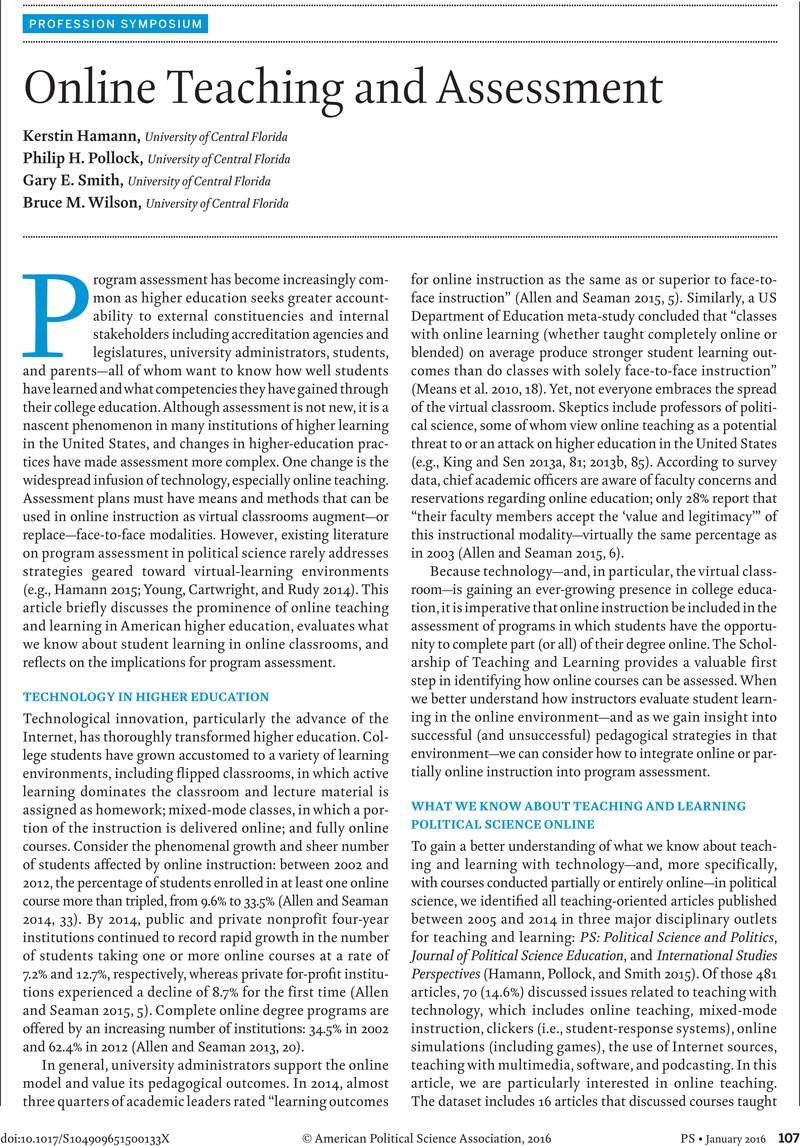Crossref Citations
This article has been cited by the following publications. This list is generated based on data provided by Crossref.
2019.
Civic Engagement in the Online Classroom: Increasing Youth Political Engagement in an Online American Government Course.
eJournal of Public Affairs,
Vol. 8,
Issue. 1,
p.
31.
Flynn, Catherine F.
2020.
Socioeconomics, Diversity, and the Politics of Online Education.
p.
1.
Stewart, Patrick A.
Terrell, Elaine
Kareev, Alex M.
Ellison, Blake Tylar
and
Urteaga, Charini I.
2020.
“Gamifying” Online American National Government: Lessons Learned From the First Year of Developing “Citizenship Quest”.
Journal of Political Science Education,
Vol. 16,
Issue. 4,
p.
508.
DeCoito, Isha
and
Estaiteyeh, Mohammed
2022.
Online teaching during the COVID-19 pandemic: exploring science/STEM teachers’ curriculum and assessment practices in Canada.
Disciplinary and Interdisciplinary Science Education Research,
Vol. 4,
Issue. 1,



